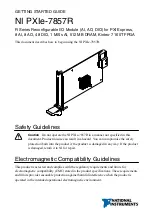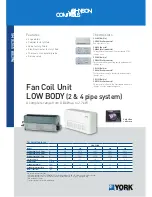
Chapter 3
Installation and Wiring
3–9
When using a 3–wire configuration, the module compensates for resistance
error due to lead wire length . For example, in a 3–wire configuration, the
module reads the resistance due to the length of one of the wires and assumes
that the resistance of the other wire is equal. If the resistances of the
individual lead wires are much different, an error may exist. The closer the
resistance values are to each other, the greater the amount of error that is
eliminated.
Important: To ensure temperature or resistance value accuracy, the
resistance difference of the cable lead wires must be
equal to or less than 0.01
Ω
.
There are several ways to insure that the lead values match as closely as
possible. They are as follows:
•
Keep lead resistance as small as possible and less than 25
Ω
..
•
Use quality cable that has a small tolerance impedance rating.
•
Use a heavy–gauge lead wire which has less resistance per foot.
Wiring Resistance Devices (Potentiometers) to the NR4 Module
Potentiometer wiring requires the same type of cable as that for the RTD
described in the previous subsection. Potentiometers can be connected to the
RTD module as a 2–wire interconnection (Figure 3.5) or a 3–wire
interconnection (Figure 3.6).
Summary of Contents for SLC 500 1746-NR4
Page 1: ...User Manual SLC 500t RTD Resistance Input Module Cat No 1746 NR4 Allen Bradley AB Spares ...
Page 15: ...Preface P 8 Notes AB Spares ...
Page 37: ...Chapter 2 Quick Start 2 12 Notes AB Spares ...
Page 63: ...Chapter 4 Preliminary Operating Considerations 4 12 Notes AB Spares ...
Page 87: ...Chapter 5 Channel Configuration Data and Status 5 24 Notes AB Spares ...
Page 107: ...Chapter 7 Module Diagnostics and Troubleshooting 7 8 Notes AB Spares ...
Page 117: ...Chapter 8 Application Examples 8 10 Notes AB Spares ...
Page 123: ...Appendix A Specifications A 6 Notes AB Spares ...
Page 125: ...Appendix B RTD Standards B 2 Notes AB Spares ...
















































